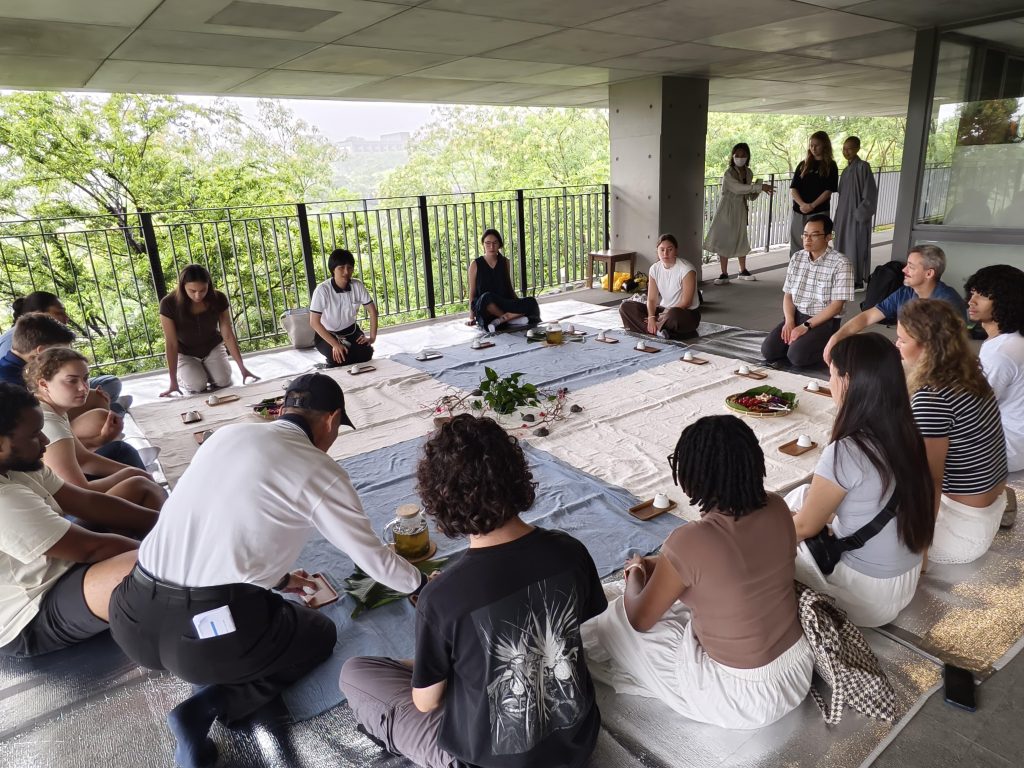Today we visited Dharma Drum Mountain in New Taipei City. When we first arrived, we were greeted by a team of volunteers, professors, and monastics. We then began our first session with an introduction of Dharma Drum Mountain and DILA, the liberal arts school associated with the monastery. We then moved on to some guided meditation.
We first participated in a seated meditation, very similar to the meditation we’ve practiced with professor Young and at some other religious sites. I found that this time, it was actually much easier to relax my mind and body than before, and when we came out of meditation, I felt more relaxed than I had been after previous meditations. When we first started meditating, it was very challenging for me to still both my body and mind. Now, I have gotten more used to it, and feel as though I am better able to control my emotions and thoughts during meditation, leaving me feeling better as a result.
Then we moved on to meditation outside, performing walking medication, standing meditation, and vocal mediation. This is very different from anything I have done before, but I really enjoyed the aspect of being in nature and incorporating the feelings and sounds from the natural world into meditating. This coincides with what Dharma Mountain encompasses in their teachings and practice. When they first introduced the monastery and school, they explained how central nature is to their beliefs and customs. This is also evident through how the campus is built around nature, with vibrant greenery infiltrating in every corner.
Next we had tea with our group. One part of the session that really resonated with me was the point to focus on one task at a time, and to live in the present. With all the chaos and stress I experience in my everyday life, I often try to multitask, which has proven time and time again to be relatively ineffective. It was a pleasant reminder to direct all attention to what is at hand in order to have the most productive outcome.
After lunch, we heard a lecture on Buddhism from Dr. Osborn, who was a monk for 17 years. We then remained in the same room for a Q&A session with two nuns and one monk. One thing that shocked me was that one of the nuns explained a newer ritual for burying the deceased. The nun explained how there is a garden where people bury the ashes of the deceased in three separate holes. This practice really emphasized the connection between Buddhism and nature, and how Buddhism is deeply rooted in interdependence between humans and the Earth. I was also observant of the nuns and monks’ behavior during this session. I noticed that for the entire duration of the Q&A, they didn’t move or change their posture once. Meanwhile, everyone from our group was fidgeting and constantly changing positions in order to remain comfortable on the cushions. I was shocked at the stillness they had and thought about the training, mental toughness, and dedication it takes to work up to the point of complete stillness, but the contrast between a Buddhist’s relaxed composure and a non-Buddhist’s more anxious demeanor.
